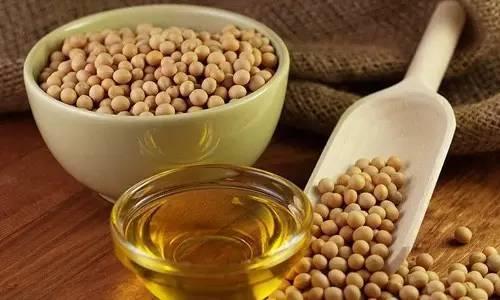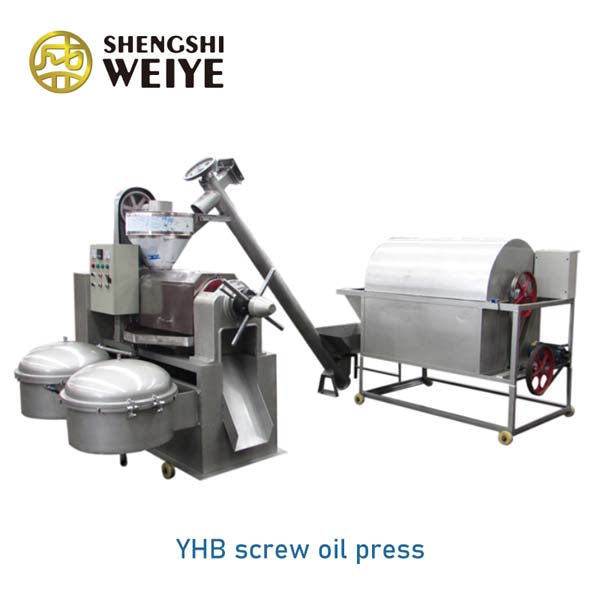
Soybean oil, also known as soybean oil, is mostly soybean salad oil. It is a vegetable oil extracted from soybean and a daily edible oil. There are two common extraction methods: pressing method and extraction method, sometimes both. Soybean meal is the leftover after soybean oil extraction. It is used in feed and food industry. It is an excellent source of protein.
Soybean oil is the largest edible oil in the world and accounts for two-thirds of the total edible oil production in the United States. Soybean oil is rich in a variety of valuable nutrients. It must be kept fresh after being processed into finished oil. The color of soybean oil is darker, and fried vegetables are easier to bubble when they are hot. Soybean oil on the market is mostly refined oil, which is suitable for cooking. Compared with other oil raw materials, the oil content of soybean is only 16% ~ 24%.
In addition to fat, soybean oil also brings in some non oil substances during processing. Unrefined crude oil contains 1% - 3% phospholipids, 0.7% - 0.8% sterols and a small amount of protein and wheat germ phenol, which is easy to cause rancidity. Therefore, if soybean oil is not hydrated to remove impurities, it is not suitable for long-term storage. In addition, during long-term storage, the color of refined soybean oil will gradually change from light to dark, which may be related to the automatic oxidation of oil. Therefore, when the color of soybean oil becomes dark, it is not suitable for long-term storage.
The production technology of soybean oil is as follows
Cleaning → crushing → softening → rolling embryo → steaming and frying → extract oil→ filter→ soybean crude oil (crude oil)
Soybean oilrefining process: crude Soybean oil (crude oil) → filtration → hydration (degumming) → alkali refining (deacidification) → decolorization → deodorization → product oil
Product Description:
According to the different requirements of customers, such as crude oil type, daily processing capacity, oil standard and so on, the specifications, number of refining tanks and product price are different.
Can undertake:
1-500 T / D soybean, rapeseed, peanut, sunflower and other pressing refining production line
1-500 T / D corn germ, Zanthoxylum, walnut oil, rice bran oil pressing and refining production line
1-500 T / D tea seed, walnut, almond, cottonseed, sesame and other pressing and refining production line
Product advantages: through dephosphorization, decolorization, deacidification, deodorization and other processes, the crude oil can reach the quality standard. After refining, the refined product oil has a clear color, no mucus, no deterioration and no peculiar smell after long-term storage.
Difference between refined oil and crude oil
|
project
|
Crude oil
|
Refined oil
|
|
colour
|
The color is cloudy
|
Crystal clear
|
|
smell
|
Smell of fishy, grass, rust, etc
|
Light oil fragrance, no peculiar smell
|
|
healthy
|
Crude oil is a kind of primary oil made from animal or vegetable oil without refining. Crude oil is not suitable for long-term storage because of its simple processing technology, high impurity content and easy oxidation. There may be problems such as pesticide residues, heavy metal pollution and harmful substances.
Another characteristic of wool oil is that when cooking, it has many bubbles, peculiar smell and large soot, which obviously affect the smell and taste of cooking food.
|
Refined oil refers to refined crude oil, crude oil will be edible, storage and other harmful impurities to remove and get in line with the national quality standards of refined oil.
The water content, impurities, acid value and peroxide value of the oil all meet the national quality standards, and it is not easy to rancidity and deterioration, and it is favorable for storage. When cooking, it does not produce a lot of lampblack and maintains the flavor of oil.
|
The purpose of oil refining is to refine crude oil. The existence of impurities in crude oil not only affects the edible value and safe storage of oil, but also brings difficulties to deep processing. However, the purpose of refining is not to remove all impurities in the oil, but to remove the harmful and unhelpful impurities in the oil, such as gossypol, protein, phospholipid, mucus and water, which are beneficial "impurities", Such as tocopherol to retain. Therefore, according to different requirements and uses, the purpose of oil refining is to remove unnecessary and harmful impurities from the oil and get the product oil meeting certain quality standards.





